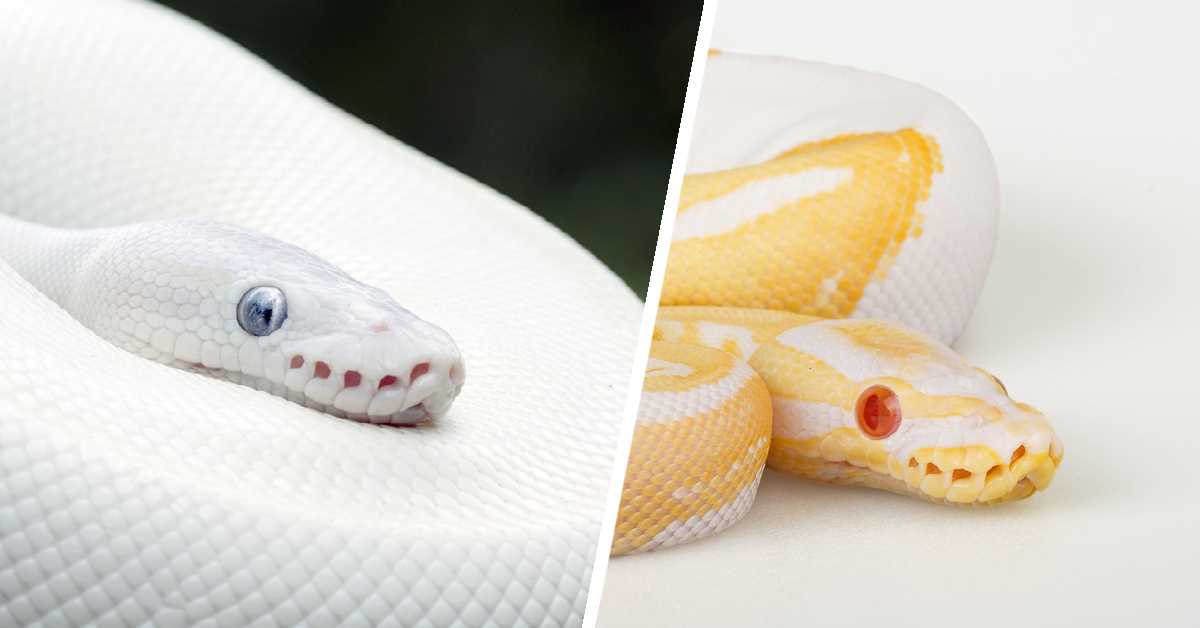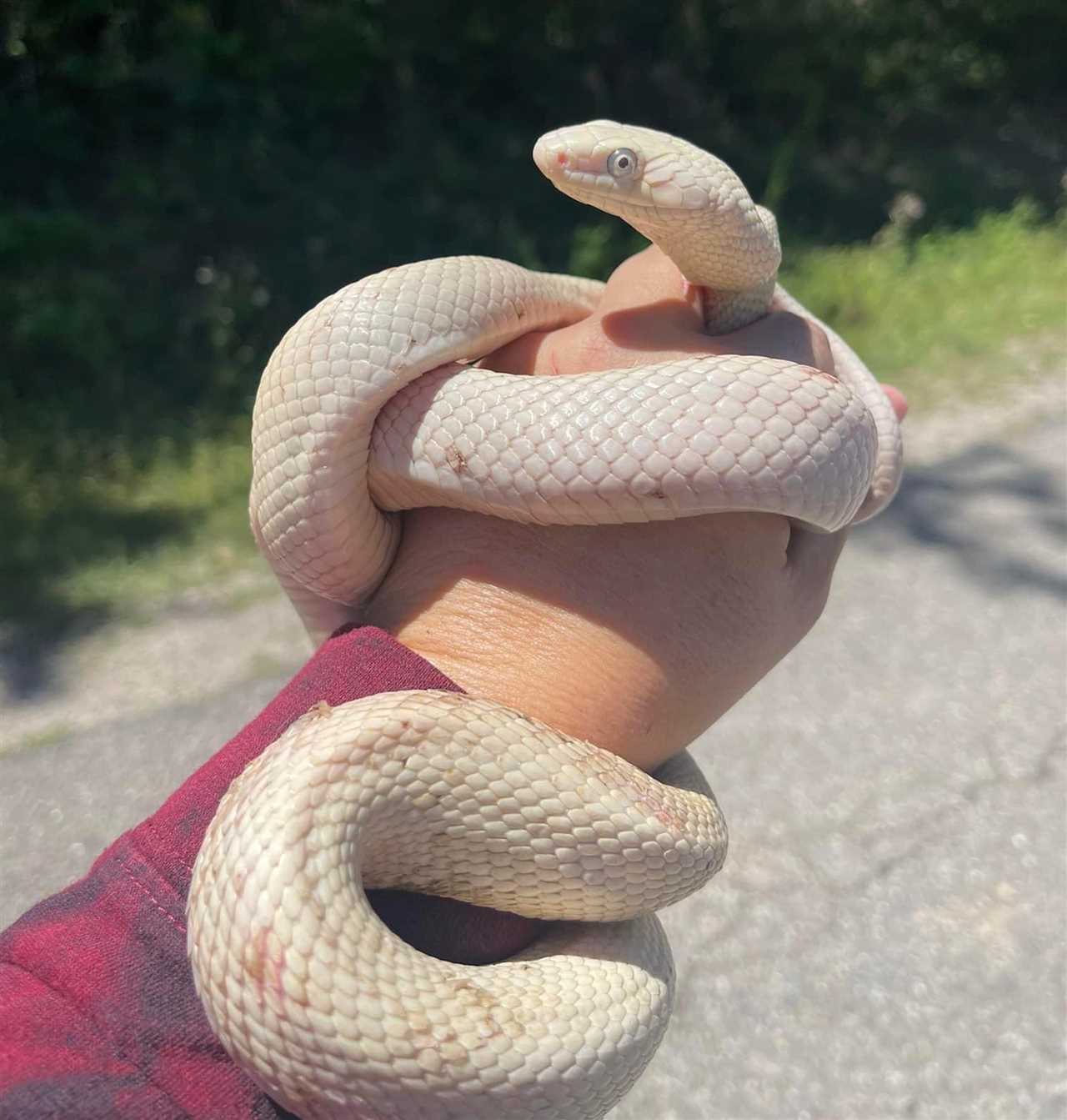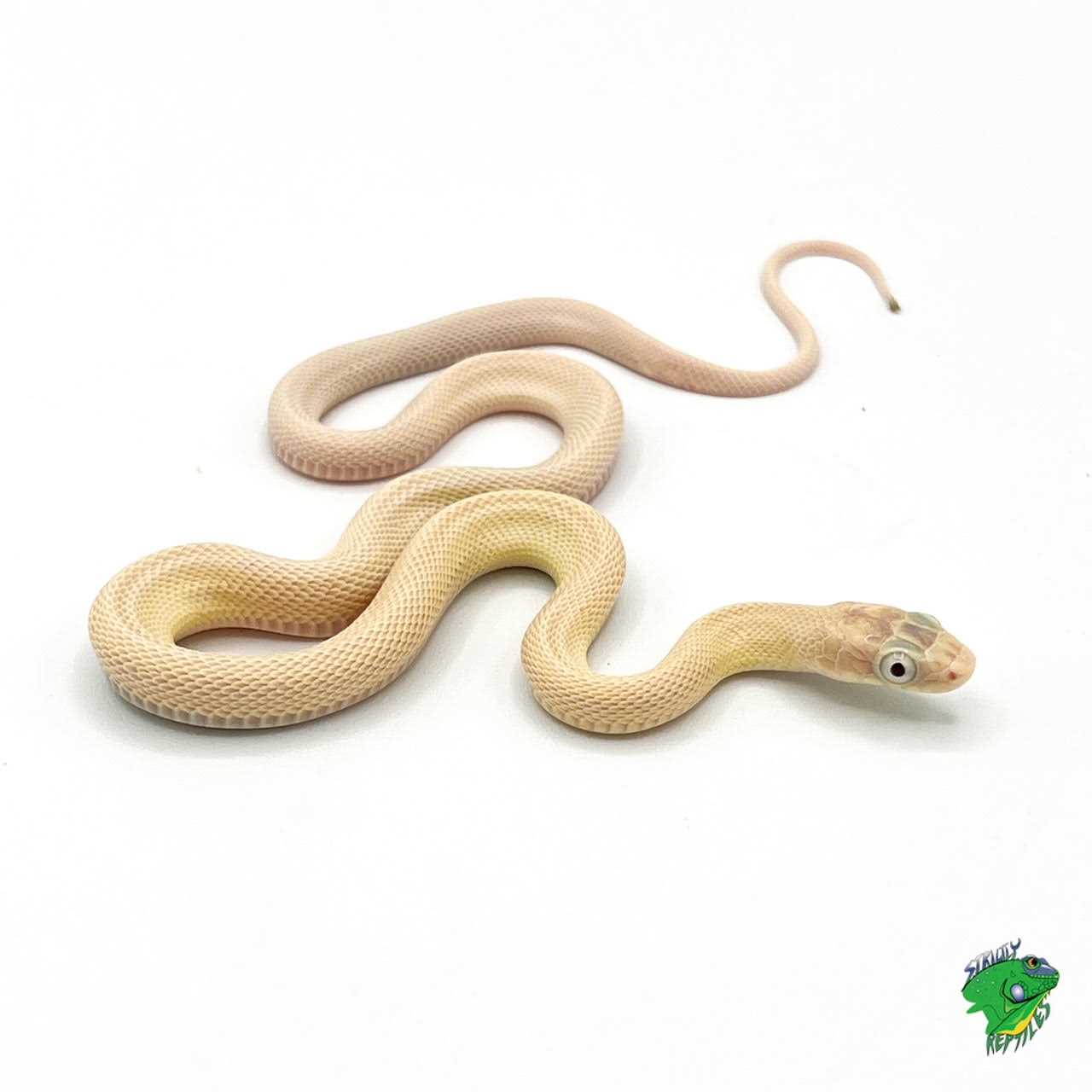Leucism occurs across a range of species, including snakes. However, spotting a leucistic snake in the wild is a once-in-a-lifetime experience for many nature enthusiasts. The contrast between the white scales and the surrounding environment creates a mesmerizing sight, making these snakes easily distinguishable from their normally colored counterparts.
Leucistic snakes are not only a visual wonder, but they also inspire curiosity among scientists and researchers. The study of genetic mutations, such as leucism, provides valuable insights into the complex mechanisms behind pigmentation and coloration in animals. These unique creatures serve as a living testament to the diversity and adaptability of nature.
Leucistic Snake: A Rare and Beautiful Phenomenon
A leucistic snake is a unique reptile with a genetic mutation that causes a lack of pigmentation in its skin and scales. This absence of color gives the snake a stunning white or pale appearance, making it easily distinguishable from other snakes in its species.
What is Leucism?
Leucism is a rare genetic condition that affects animals, including snakes. Unlike albinism, which is also a genetic condition causing a lack of pigmentation, leucism only affects the color of the animal’s skin and scales, while their eyes and other body parts retain their natural color.
Leucism occurs when there is a deficiency of melanin, the pigment responsible for giving color to skin, hair, feathers, and scales. This genetic mutation interferes with the production of melanin, resulting in the white or pale appearance of the leucistic snake.
Leucism vs Albinism

Although leucism and albinism both result in a lack of pigmentation, they are distinct conditions. In albinism, there is a complete absence of melanin production, affecting not only the skin and scales but also the eyes, which often appear reddish due to the lack of melanin in the iris.
In contrast, leucism only affects the color of the snake’s skin and scales, leaving their eyes and other body parts unaffected. This distinction makes leucistic snakes truly unique and captivating creatures.
Leucistic Snakes in Nature
Leucistic snakes are incredibly rare in nature. Their distinctive white or pale coloration makes them more vulnerable to predators, making it difficult for them to survive in the wild. Their lack of camouflage can make them more visible and easily spotted, putting them at a disadvantage in hunting and avoiding danger.
Despite these challenges, leucistic snakes can occasionally be found in certain regions around the world. Their rarity and beauty make them a fascinating sight for researchers, wildlife enthusiasts, and snake lovers alike.
Leucistic Snake as a Pet
Due to their rarity and unique appearance, leucistic snakes are highly sought after as pets. Snake enthusiasts are often captivated by their stunning white coloration and distinctive features.
| Pros of owning a leucistic snake: | Cons of owning a leucistic snake: |
|---|---|
| – Unique and captivating appearance | – Higher risk of predation due to lack of camouflage |
| – Fascinating to observe and study | – Specific care requirements |
| – Potential for educational purposes | – Difficulty in finding reputable breeders |
What is Leucism?

Leucism is a rare genetic condition that affects the pigmentation of an animal’s skin, feathers, or scales, resulting in a partial or complete loss of color. This phenomenon can occur in various species, including reptiles, and is characterized by the presence of white or pale-colored patches on the affected individual.
White Reptile with Leucistic Mutation
Leucistic snakes are a fascinating example of this intriguing mutation. Unlike albinism, where an animal completely lacks melanin, leucism affects only the coloration of the skin, leaving the eyes and scales with their normal pigmentation. This results in a unique appearance, with a white or pale-colored reptile contrasting against its normal-colored eyes and scale patterns.
Distinguishing Leucism from Albinism

While leucism and albinism may seem similar at first glance, there are key differences between the two conditions. Apart from the fact that leucism affects only the skin color, leucistic animals often have visible pigmentation in their eyes, unlike individuals with albinism who have pink or red eyes due to the complete absence of melanin. Additionally, leucistic individuals can still produce melanin, albeit in reduced quantities, while albinos are unable to produce melanin at all.
| Leucism | Albinism |
|---|---|
| Affects skin color | Affects overall pigmentation |
| Normal-colored eyes | Pink or red eyes |
| Reduced melanin production | No melanin production |
Leucism vs Albinism
In the world of reptiles, white scales are often associated with albinism, a genetic mutation that affects the production of melanin, the pigment responsible for color in animals. However, there is another phenomenon that results in white-colored reptiles called leucism.
Leucism is also a genetic mutation, but it affects the color of the animal in a different way than albinism. While albino reptiles lack melanin altogether, leucistic animals have a reduction in the production of melanin, resulting in a partial loss of color.
Another important difference between leucism and albinism is that leucistic snakes do not have the same health issues that albino snakes often face. Albino snakes can have sensitive eyes and skin, as well as a weakened immune system. On the other hand, leucistic snakes do not have these same health concerns and can thrive in their natural environment.
| Leucism | Albinism |
|---|---|
| Reduction in melanin production | No melanin production |
| Partial loss of color | Complete lack of color |
| Some color in scales | Completely white scales |
| Normal eye color | Red or pink eyes |
| No health issues | Sensitive eyes and skin, weakened immune system |
Leucistic Snakes in Nature
In nature, leucistic snakes are extremely rare. Their unique coloration makes them stand out from their normally colored counterparts, which can make it difficult for them to blend into their environment and avoid predators. However, this mutation can also provide certain advantages. For example, leucistic snakes may be less visible to prey, allowing them to easily ambush and catch their food.
Leucism vs Albinism
Additionally, leucistic snakes may have a faint pattern or coloration that is different from albinos, who lack any pigment except for their eyes. The lack of pigmentation in both leucistic and albino snakes makes them appear white or pale, but leucistic snakes may still have hints of patterns or colors that differentiate them.
Leucistic Snake as a Pet
Leucistic snakes are a rare and unique reptile to keep as pets. Their white scales, which are caused by a genetic mutation called leucism, make them a captivating and beautiful addition to any reptile collection.
What is Leucism?
Leucism is a condition that affects the pigmentation of an animal’s skin or scales, resulting in a loss of color. Unlike albinism, which is the absence of all pigmentation, leucism only affects certain pigments, giving the animal a white or pale appearance.
Leucism vs Albinism
While both leucism and albinism involve a partial or complete loss of pigmentation, there are some key differences between the two. Albinism affects all pigments, including the melanin responsible for skin, hair, and eye color. Leucism, on the other hand, only affects certain pigments, resulting in a white or pale coloration while still retaining normal eye and skin color.
Leucistic snakes, with their unique coloration, stand out among their non-leucistic counterparts. The contrast between their white scales and the vibrant colors of their eyes and skin make them an intriguing reptile to observe.
Leucistic snakes are generally docile and make great pets for reptile enthusiasts. Their unique appearance can be a conversation starter and they are relatively low-maintenance compared to other pets.
Overall, leucistic snakes are a rare and captivating pet to own. Their unique coloration and the genetic mutation behind it make them a fascinating addition to any reptile lover’s collection.

I’m Lena Adams—a product of an unconventional upbringing in the African wilderness. My father, a daring explorer of African wildlife, sparked my fascination with reptiles, a passion that intertwined with the tragic loss of my mother during an expedition, leaving an indelible mark on my life. Driven to understand the creatures that captivated my parents, I embarked on my journey, sharing insights about reptiles, frogs, and lizards on my website. Through my explorations and conservation efforts, I honour my family’s legacy while seeking connections—to the creatures, nature, and the mother whose presence I yearn to understand.
